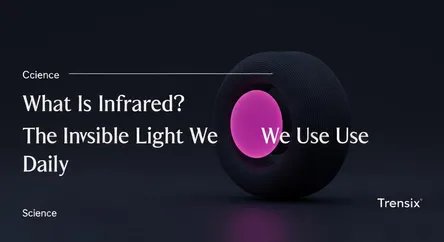Science
What Is Infrared? The Invisible Light We Use Daily

An introduction to infrared, the invisible electromagnetic radiation we feel as heat, and its growing applications in technology, health, and more.
What is it?
Infrared (IR) is a type of electromagnetic radiation with wavelengths longer than visible red light but shorter than microwaves. It is invisible to the human eye, but we commonly experience it as heat. Every object with a temperature above absolute zero, including the sun, fire, and the human body, emits a certain level of infrared radiation. Discovered by astronomer William Herschel in 1800, this radiation is a natural part of the electromagnetic spectrum. Scientists often categorize it into three regions: near-infrared, mid-infrared, and far-infrared, each having different applications.
Why is it trending?
Infrared technology is becoming more prevalent due to significant cost reductions, miniaturization, and increased manufacturing scalability. This has driven its adoption in new markets, from consumer electronics to smart buildings, where it helps regulate temperature and improve energy efficiency. The automotive industry is increasingly using IR for night vision systems and to improve the reliability of autonomous vehicles. In healthcare, there's growing interest in infrared therapy for pain relief and improved circulation. The expansion of surveillance and security applications also fuels the demand for advanced infrared detectors.
How does it affect people?
Infrared technology is deeply integrated into daily life. It's the basis for remote controls, non-contact thermometers, and thermal imaging cameras used by firefighters and energy auditors. Infrared sensors enhance home and public security systems. In the medical field, it provides non-invasive therapies for pain and inflammation and aids in diagnostics. Wearable devices can use IR to monitor vital signs. Furthermore, infrared astronomy, utilized by instruments like the James Webb Space Telescope, allows scientists to see through cosmic dust and study celestial objects that are too cool or distant to be seen in visible light.